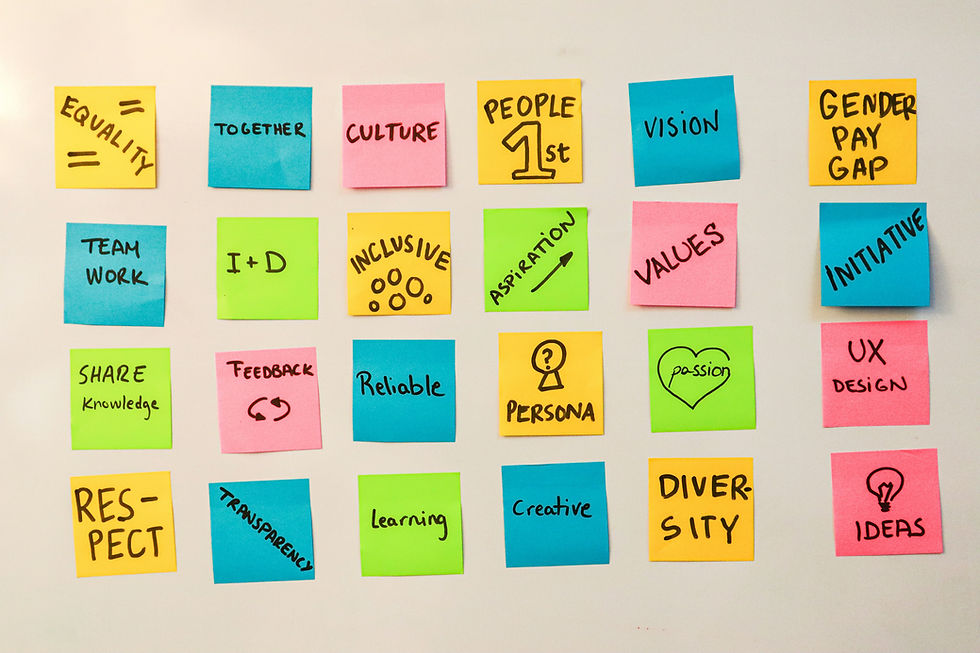Make Meetings Work
- helenjbutler
- Jul 2, 2021
- 3 min read

Meetings have never been so unpopular. Who hasn’t sat in an uncomfortable chair watching a tedious Powerpoint as you think of all the things you could be doing instead? And on Zoom they can be even worse…
Elon Musk famously tells employees that they should walk out of a meeting or drop off a call as soon as they realise they’re not adding any value. He doesn’t think this is rude, but I suspect that whoever’s leading the meeting might disagree.
But meetings can also be amazing. A shared purpose along with alternative ideas, perspectives and ways of doing things can turn a dry project into something wonderful. So what can leaders do to structure meetings so that everyone is engaged and feel they can share their ideas? And in today’s hybrid work environments, how can we make sure that remote attendees feel heard just as much as those in the office?
1. Begin with the end in mind
This is the only one of Stephen Covey’s 7 habits I can ever remember, and is useful in pretty much every context. What do you need to achieve from the meeting? And what’s the best way of ensuring you get there? All meetings should have a clear purpose and end point, and everyone should know this ahead of the meeting, so they can prepare properly.
2. Contributors not attendees
Now think about who really needs to be at the meeting? Keep the numbers as low as possible, and only invite people who will be able to make a positive contribution and who have differing perspectives and viewpoints.
Never invite people to a meeting just so they know what’s happening – there are much better ways of doing this (including recording it if it’s virtual). And if there are more than about six people in real life, or less if it’s virtual, then consider alternative ways of achieving the meeting objectives. Perhaps you could do two separate meetings, use Slack, or all comment on a Google doc? Jeff Bezos has a rule called ‘two-pizza teams’ that means that no meeting should ever have more people than can be fed by two pizzas.
3. Structure
When designing the structure of the meeting, consider having quiet time at the beginning to allow everyone to review the agenda and any supporting documents at the same time. This way, everybody will be informed and focused, and nobody will try and blag their way through the meeting, wasting everyone’s time. This is another favourite rule from Jeff Bezos, as well as Twitter Founder and CEO Jack Dorsey.
“Most of my meetings are now Google doc-based, starting with 10 minutes of reading and commenting directly in the doc,” Dorsey tweeted in 2018. “This practice makes time for everyone to get on same page, allows us to work from many locations, and gets to truth/critical thinking faster.”
4. Air time
Once everyone’s fully present and is giving their full attention, it’s essential that they’re all given the same air time, regardless of rank or job function. If you’re inviting people to a meeting then they should all be equal in terms of contribution. If their ideas or view point is not as important as others’, then why did you invite them?
As meeting leader you need to share the boundaries ahead of time and police timings in a good natured but firm way. If everyone knows that they only have a finite time to speak, it focuses the mind and leads to better thinking and less interruptions.
All this might sound a bit draconian, but it is possible to make the time limits into a fun thing, by using klaxons, sound effects or even clapping people when their time’s up. This does take some practice, but once everyone sees how much more participative and productive the meetings are when everyone’s given the same air time, they’ll be on board.
For more ideas about how you can bring purpose into your meetings, contact me today.




Nice Article, thank you for sharing.
salesforce admin certification